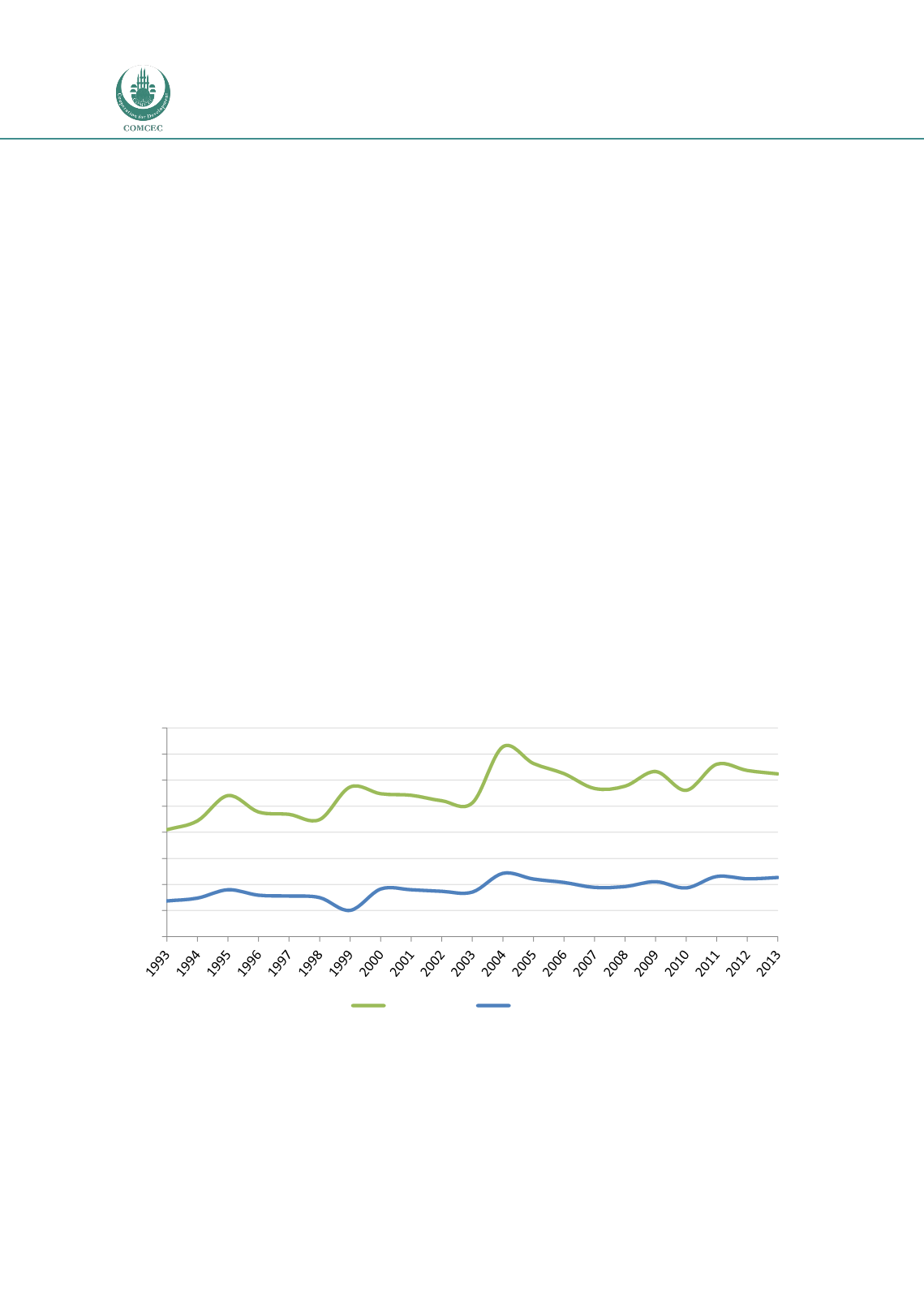

Promoting Agricultural Value Chains:
In the OIC Member Countries
104
5.6
The cotton value chain in Pakistan
Cotton is the backbone and driver of Pakistan’s economy. The country is the 4
th
largest cotton
producer worldwide after China, India and the USA, the 3
rd
largest consumer of cotton and also
the largest exporter of cotton yarn in the world. The cotton sector, together with the textile
and apparel industry, accounts for 8 percent of national GDP and 50 percent of the country’s
export value, while employing 40 percent of the industrial work force (USDA, 2015). Cotton
production thus supports Pakistan’s largest industrial sector, comprised of over 425 textile
mills, 1,000 ginneries, and 300 cotton seed oil crushers and refiners.
Grown on 15 percent of the country’s arable land, cotton production is concentrated in the two
provinces of Punjab (about 79 percent of production) and Sindh (20 percent) and cultivated by
an estimated 1.6 million farmers with mostly small holdings of less than five hectares (USDA,
2015).
Cotton production has grown slowly between 1993 and 2013 to a total production volume of
6.2 million tonnes of seed cotton in 2013, which translated into 2.17 million tonnes of cotton
lint (see
Figure 5-18), with large fluctuations in cotton yields between the years. The main
causes of these fluctuations are large-scale pest infestations and cotton diseases, which have
hit production since the early 1990s and have caused high economic losses (Nazli, 2010).
Losses are estimated to vary from 10-15 percent in average years to 30-40 percent in bad crop
years (Salam, 2008). Although a wide variety of pesticides has been introduced to control the
various cotton pests, fluctuation continues due to the proliferation of substandard chemicals
and poor pest control methods (Nazli, 2010). Farmers’ of overuse of pesticides has led to
widespread problems of environmental pollution and has also resulted in higher production
costs, as the pests have progressively developed resistance to these chemicals (Salam, 2008).
Figure 5-18 Cotton production in Pakistan, 1993-2013
Source: FAOSTAT, 2015
In addition to the recurring pests, cotton yields have suffered from a lack of quality seed, late
wheat harvests resulting in delayed cotton planting, excessive rains at the time of sowing, and
improper use of biotech seeds and pesticides by farmers (USDA, 2013b). Yields were at 757
kg/ha in 2014, which is relatively high compared to recent years and higher than in
0
1
2
3
4
5
6
7
8
Million tonnes
Seed cotton
Cotton lint

















